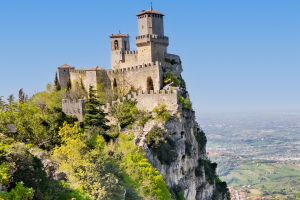Hello, fellow photography lovers! Have you ever found yourself in the mountains, surrounded by breathtaking views, and wished you could capture the beauty with just your smartphone?
Well, you’re in the right place! Mountain photography with a phone may sound simple, but it’s an art that requires some technique. Whether you're hiking, trekking, or just enjoying a peaceful day in nature, having the right skills to capture the moment can make all the difference.
Today, let’s talk about how we can use our phones to snap stunning mountain landscapes, scenic vistas, and those unforgettable moments that make us fall in love with the great outdoors.
Why Use a Smartphone for Mountain Photography?
In the past, many believed that high-quality photography was only possible with expensive cameras and lenses. However, smartphones today are packed with incredible technology that makes them more than capable of capturing stunning mountain views. The key lies in knowing how to make the most of the phone’s capabilities, especially when it comes to features like wide-angle lenses, HDR, and low-light performance.
Not only are smartphones portable, but they also allow us to quickly capture spontaneous moments without the bulk of a DSLR camera. So, whether we’re on a short hike or deep in the wilderness, our smartphones are the perfect companion for capturing nature’s beauty.
Essential Tips for Stunning Mountain Photos
Now that we know why using a smartphone for mountain photography is awesome, let’s dive into some practical tips that will help us take amazing photos while on our mountain adventures.
1. Use the Right Composition: Composition is key to taking great photos. The rule of thirds is an easy and effective way to ensure balance in your shot. Imagine your frame divided into three sections, both vertically and horizontally. Positioning key elements like a mountain peak, trees, or the sky along these lines or intersections will help make your photos more visually appealing.
2. Embrace Natural Lighting: Mountain environments often provide stunning natural light, especially during sunrise or sunset when the golden light can enhance the scenery. Early mornings and late afternoons (known as the golden hour) offer soft and diffused light that reduces harsh shadows and brings out the natural beauty of the landscape. Avoid shooting in midday sunlight as it can cause overly bright areas and deep shadows.
3. Utilize Your Phone's Wide-Angle Lens: Many smartphones today come equipped with a wide-angle lens. This feature is perfect for capturing sweeping mountain views or expansive landscapes. By using this lens, we can include more of the environment in the frame, creating a sense of grandeur and depth that helps convey the vastness of the mountains.
4. Focus on the Details: While wide shots of towering mountains are impressive, don’t forget to capture the smaller details around you. The texture of a rock, the dew on a flower, or the intricate patterns in the landscape can tell a compelling story. By focusing on the smaller details, we can create a sense of intimacy and connection with nature.
5. Take Advantage of HDR Mode: Mountain landscapes often feature both bright skies and dark shadows. This contrast can be difficult for smartphones to handle, but using the HDR (High Dynamic Range) mode can help balance the exposure. HDR will combine multiple exposures to create a photo that captures both the highlights and shadows in detail, giving your mountain photos more depth and clarity.
Dealing with Mountain Terrain and Weather
One of the unique challenges of mountain photography is the terrain and weather. The rugged landscape can make it difficult to get the perfect shot, and sudden weather changes can impact lighting and visibility. Here’s how we can deal with these challenges:
1. Be Prepared for Weather Changes: The weather in the mountains can change quickly, so it’s essential to be ready for anything. If you’re shooting in cloudy or foggy weather, consider how the mist can add an atmospheric, mysterious vibe to your photos. Likewise, if the weather clears, seize the opportunity to capture the newly revealed views.
5 Everyday Photography SECRETS You Must Try on Your Smartphone for Stunning Photos
Video by Pierre T. Lambert
2. Stabilize Your Phone: When shooting in low light or when using slow shutter speeds (such as in foggy conditions), it can be hard to avoid motion blur. To stabilize your phone, try placing it on a stable surface, like a rock or a tripod, or hold it with both hands to reduce shake.
Post-Processing Tips for Polishing Your Shots
Once we’ve taken our photos, a little post-processing can go a long way in enhancing the final result. Most smartphones come with built-in editing tools, and there are plenty of apps that offer more advanced features. Here are some tips for editing your mountain photos:
1. Adjust the Exposure: Sometimes, the lighting in the mountains can be tricky. Adjusting the exposure can help bring out the details in both the dark and light areas of your photo.
2. Increase Contrast and Saturation: Boosting the contrast and saturation can make the colors in your photo pop, especially if the landscape is full of vibrant greens, blues, or earthy tones.
3. Use Filters Sparingly: While filters can add a unique look to your photos, it’s important to use them sparingly. Over-filtering can make the photo look unnatural. Aim to enhance the natural beauty of the landscape instead of altering it too much.
Get Ready to Capture Your Adventure!
Mountain photography with a smartphone is all about embracing the beauty of nature and using the tools we have to capture stunning shots. By mastering composition, utilizing the right features on our phones, and adjusting to the weather and terrain, we can create images that truly reflect the magnificence of the mountains.
So, the next time you’re hiking or exploring the outdoors, take a moment to snap a photo and appreciate the world around you. Happy shooting, and may your photos inspire others to see the mountains through your eyes!
Thanks for reading, Lykkers! Keep exploring, and don’t forget to share your incredible shots!


